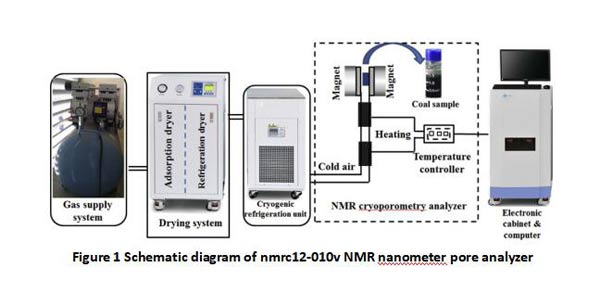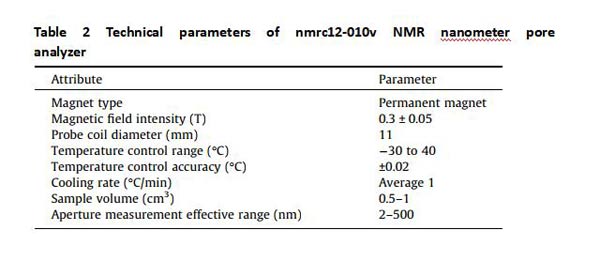Introduction
The pore structure of coal body directly affects the storage and migration of gas. Pore size distribution (PSD) is an important parameter for the comprehensive quantitative analysis of different gas adsorption capacities, micro-deformation caused by adsorption and flow-gas coupling. The accurate measurement of pore size distribution is the key to the characterization of pore structure.
According to IUPAC classification standard, the pores of coal body can be divided into micropores (< 2nm), mesoporous pores (2-50nm) and macropores (> 50nm).The micropore is the gas adsorption space, the mesoporous is the gas diffusion space, and the large pore is the gas seepage space. Adsorbed gas accounts for 95% of the gas content in coal. Micropores and mesoporous pores mainly exist in coal matrix. The quantitative evaluation of pore structure of coal body is also a key step in the follow-up coal utilization.
The measurement of pore size distribution by nuclear magnetic low temperature nanometer pore method is realized by the change of fluid melting point in the pore. The pore volume can be obtained directly through the linear relationship between the pore volume and the signal strength. Since the 1990s, the nuclear magnetic low temperature nano pore method has been applied to test pore size distribution of porous materials. It has been applied to different porous media, including cement concrete, wood, single-wall carbon nanotubes, activated carbon, fuel cells, gels, fixed-bed reactors, medical applications, biological systems and polymers. There are few studies on the application of nuclear magnetic low temperature nano pore method to the characterization of coal pore structure.
Experiment
The nuclear magnetic low temperature nano pore analysis test was carried out by the nmrc12-010v nuclear magnetic resonance nano pore analyzer manufactured by Niumag. The schematic diagram of the instrument is shown in figure 1, and relevant technical parameters are shown in table 2.


 NIUMAG
NIUMAG